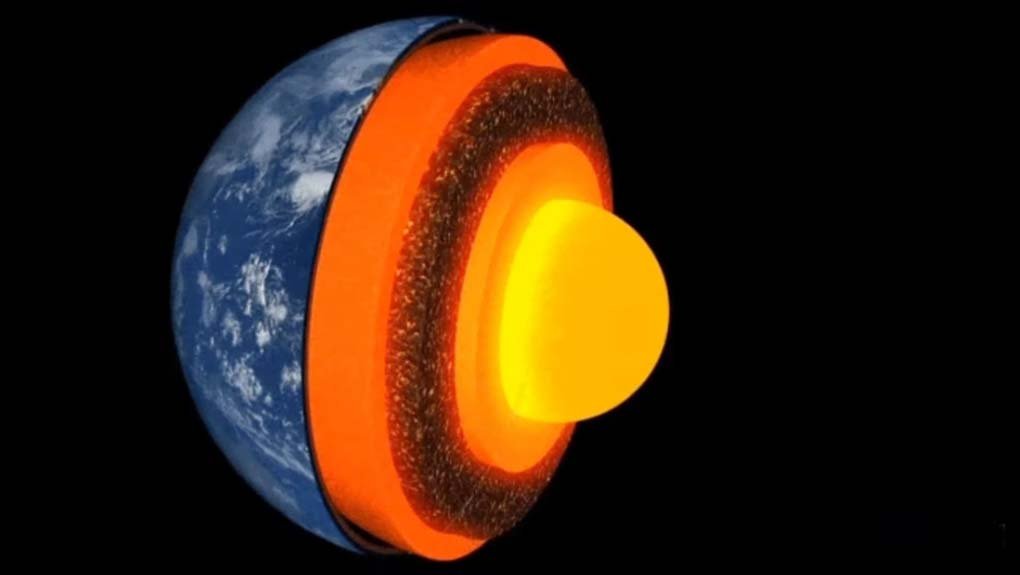Engaging Introduction:
Imagine a world in which the ground you walk on conceals truths so great they change the laws of science. Students have known for decades that the inner core of Earth is a solid, unyielding spherical of iron and nickel encased within a molten outer core. But revolutionary studies released in Nature Geoscience have destroyed this conventional wisdom. Scientists have found, using modern seismic data, that the inner core of Earth is dynamic, “shape-shifting,” and far more mysterious than formerly believed. This discovery not only redefines our knowledge of the geology of Earth but also calls for a worldwide rethink of how we teach the hidden operations of our planet.
A Seismic Surprise: How Scientists Cracked the Core’s Code
The breakthrough began with a mystery: seismic waves from earthquakes and nuclear tests behaved oddly as they passed through the planet’s core. Waves traveling through the eastern hemisphere of the inner core moved faster than those passing through the west. To solve this puzzle, a team from the University of Utah and the Chinese Academy of Sciences analyzed decades of seismic data using machine learning algorithms. What they found was astonishing.
According to Dr. Guanning Pang, the study’s lead author, “The inner core isn’t a uniform solid. It’s more like a patchwork of textures—some areas are rigid, while others are mushy or even partially molten.” These “soft spots” likely form due to extreme heat and pressure fluctuations near the boundary between the inner and outer core. ScienceDaily likened the discovery to “finding hidden rooms in a house you’ve lived in your entire life.”
Why This Changes Everything: From Magnetic Fields to Climate
The implications ripple far beyond geology classrooms. Earth’s magnetic field, generated by the churning liquid outer core, shields life from harmful solar radiation. But if the inner core is dynamic, it could alter how heat escapes from the core, destabilizing the magnetic field over time. Dr. Jessica Irving, a seismologist at the University of Bristol, told The Guardian, “This challenges our assumptions about how the magnetic field sustains itself. Even small changes could impact satellite communications and animal migration patterns.”
The discovery also ties into climate science. Geothermal heat from the core drives volcanic activity and ocean currents, both of which influence global climate systems. A “shape-shifting” inner core might explain why ancient climate records show abrupt shifts in Earth’s temperature—phenomena current models struggle to replicate.

The Human Side: Teachers, Students, and a Race Against Time
For teachers, the results are a wake-up call. High school textbooks still show the inner core as a stationary, metallic ball, a simplification that today runs the danger of misleading students. John Vidale, a geophysicist at USC, highlighted the urgency: “We’re teaching 20th-century science to 21st-century kids. This isn’t just about accuracy; it’s about inspiring the next generation to ask bigger questions.”
Teachers like Maria Gonzalez, a high school Earth science instructor in Texas, are already adapting. “My students saw headlines about the study and asked, ‘Why does this matter?’” she shared. “We turned it into a lesson on how science evolves. It’s thrilling—and a little scary—to show them that even ‘facts’ can change.”
A Deeper Mystery: What We Still Don’t Know
Despite the leap forward, the inner core remains a frontier. Scientists can’t directly observe it—temperatures exceed 9,000°F (5,000°C), and pressures are 3.6 million times stronger than at the surface. Instead, they rely on seismic waves as their “x-ray vision.”
Dr. Pang’s team plans to deploy more sensitive seismometers worldwide to map the core’s structure in finer detail. Meanwhile, labs are simulating core conditions using diamond anvils and lasers to study how iron behaves under such extremes. “Every answer leads to new questions,” said Dr. Pang. “Is the inner core melting in some regions? How fast do these changes occur? We’re just beginning to see the picture.”
Conclusion: Rewriting Earth’s Story—One Layer at a Time
This discovery is a reminder that Earth, even after 4.5 billion years, still holds secrets. As textbooks scramble to update diagrams and theories, the rest of us are left marveling at the dynamism of our planet’s hidden heart. For scientists, educators, and curious minds alike, the message is clear: the ground beneath us is alive with change.
Related Video: (Video Link)
Sources:
- Nature Geoscience
- ScienceDaily
- University of Utah Press Release
- The Guardian Interview with Dr. Jessica Irving
- USC Department of Earth Sciences

